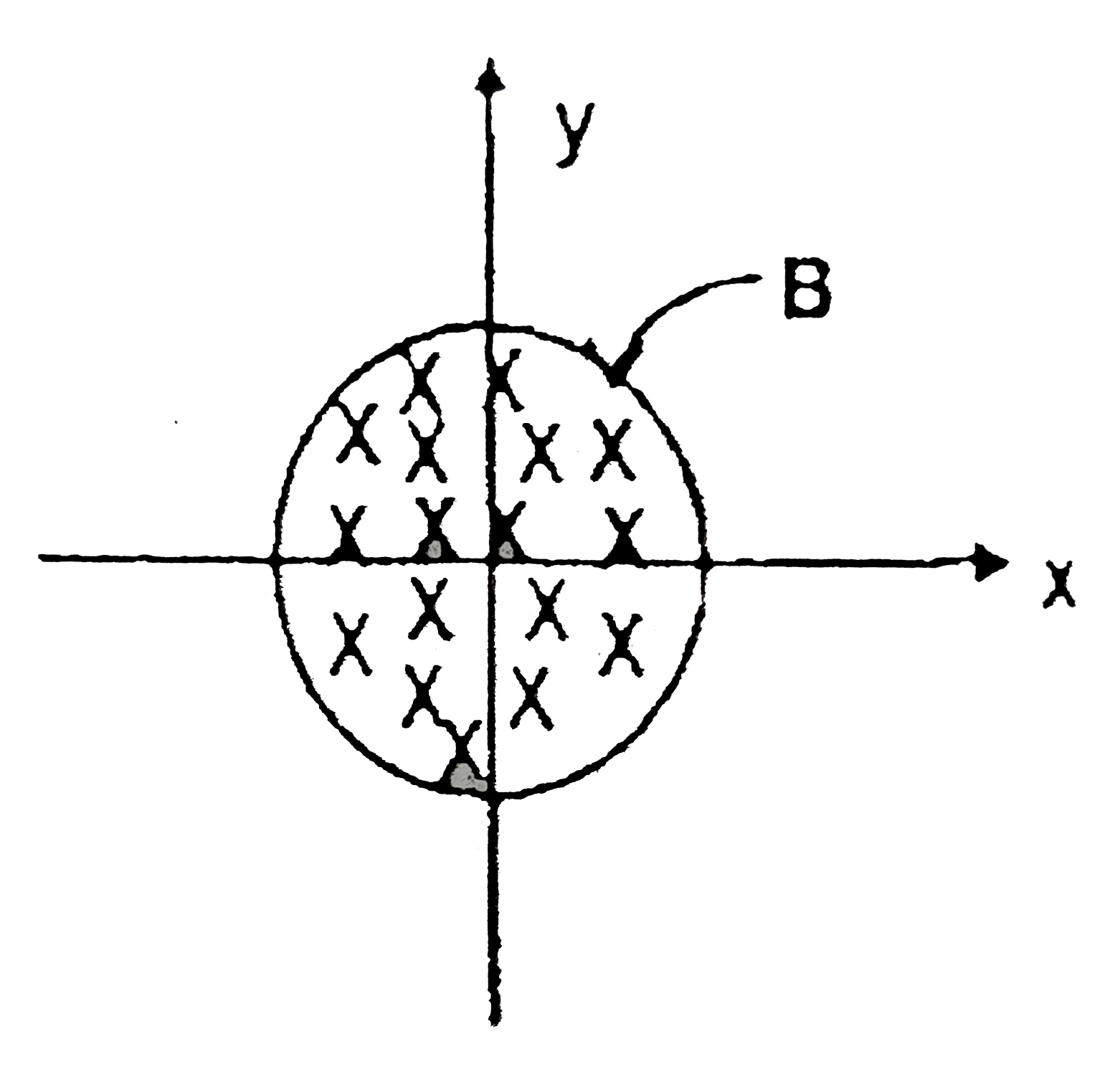A body has its centre of maas at the origin. The x-coordinates of the particles
may be all positive
may be all negative
may be all non negative
may be positive for some case and negative in other cases.
The correct Answer is:C, D
To solve the problem, we need to analyze the conditions under which the center of mass (COM) of a system of particles can be at the origin (x = 0).
1. Understanding the Center of Mass Formula:
The x-coordinate of the center of mass (COM) for a system of particles is given by the formula:
xCOM=m1x1+m2x2+m3x3+…m1+m2+m3+…
where mi is the mass of the ith particle and xi is its x-coordinate.
2. Setting the Condition for COM at the Origin:
Since the center of mass is at the origin, we have:
xCOM=0
This implies:
m1x1+m2x2+m3x3+…=0
3. Analyzing the Implications:
- If all xi (x-coordinates of the particles) are positive, then m1x1+m2x2+m3x3+… would be positive, which contradicts the condition that it equals zero. Therefore, not all x-coordinates can be positive.
- If all xi are negative, then the sum would also be negative, which again contradicts the condition that it equals zero. Thus, not all x-coordinates can be negative either.
- If some xi are positive and some are negative, it is possible for their weighted sum to equal zero, satisfying the condition for the center of mass at the origin.
4. Conclusion:
- It is possible for some particles to have positive x-coordinates and others to have negative x-coordinates, resulting in a net sum of zero.
- It is also possible for some particles to have zero x-coordinates, which would also contribute to the center of mass being at the origin.
Final Answer:
The x-coordinates of the particles can be:
- Some positive and some negative (Option D).
- Some can be zero (Option C).
The x-coordinate of the center of mass (COM) for a system of particles is given by the formula:
xCOM=m1x1+m2x2+m3x3+…m1+m2+m3+…
where mi is the mass of the ith particle and xi is its x-coordinate.
Since the center of mass is at the origin, we have:
xCOM=0
This implies:
m1x1+m2x2+m3x3+…=0
- If all xi (x-coordinates of the particles) are positive, then m1x1+m2x2+m3x3+… would be positive, which contradicts the condition that it equals zero. Therefore, not all x-coordinates can be positive.
- If all xi are negative, then the sum would also be negative, which again contradicts the condition that it equals zero. Thus, not all x-coordinates can be negative either.
- If some xi are positive and some are negative, it is possible for their weighted sum to equal zero, satisfying the condition for the center of mass at the origin.
- It is possible for some particles to have positive x-coordinates and others to have negative x-coordinates, resulting in a net sum of zero.
- It is also possible for some particles to have zero x-coordinates, which would also contribute to the center of mass being at the origin.
The x-coordinates of the particles can be:
- Some positive and some negative (Option D).
- Some can be zero (Option C).
Topper's Solved these Questions
- CENTRE OF MASS, LINEAR MOMENTUM, COLLISIONBOOK - HC VERMA ENGLISHCHAPTER - CENTRE OF MASS, LINEAR MOMENTUM, COLLISIONEXERCISE - Question For short Answer
25 Videos
- CALORIMETRYBOOK - HC VERMA ENGLISHCHAPTER - CALORIMETRYEXERCISE - Short answer
9 Videos
- CIRCULAR MOTIONBOOK - HC VERMA ENGLISHCHAPTER - CIRCULAR MOTIONEXERCISE - Question for short Answer
10 Videos
Similar Questions
A body having its centre of mass at the origin has three of its particles at (a,0,0),(0,a,0),(0,0,a). The moments of inertia of the body about the X and Y axes are 0.20 kg −m2 each. The moment of inertia about the Z-axis
View SolutionCoordinates of the origin are
View SolutionA loop is kept so that its center lies at the origin of the coordinate system. A magnetic field has the induction B pointing along Z axis as shown in the figure

View SolutionA particle of mass m is moving with constant speed v on the line y=b in positive x-direction. Find its angular momentum about origin, when position coordinates of the particle are (a, b).
View SolutionIf large number of particles are distributed on XY plane and their centre of mass is at origin of coordinates, then
View SolutionThe speed v of a particle moving along a straight line is given by a+bv2=x2 where x is its distance from the origin. The acceleration of the particle is
View SolutionVelocity and acceleration of a particle at some instant of time are v=(3ˆi+4ˆj)ms−1 and a=−(6ˆi+8ˆj)ms−2 respectively. At the same instant particle is at origin. Maximum x-coordinate of particle will be
View SolutionIf a large number of particles are distributed on YZ plane and their centre of mass is at origin of coordinates, then
Sum of moments of masses of all particles about the origin is zero
Sum of momentum of masses of all particles w.r.t. the origin is zero
Sum of moments of masses of all particles about Y axis is zero.
Sum of moments of masses of all particles about Z axis is zero.
View SolutionAll the particles of a body are situated at a distance R from the origin. The distance of the centre of mass of the body from the origin is
View SolutionAll the particles of body are situated at a distance R from the origin. The distance of the centre of mass of the body from the origin is also R. Is this statement true or false?
View Solution
